Imagine a living space that seamlessly harnesses the sun’s energy to provide warmth, light and comfort. That’s the essence of passive solar design. It’s not about extravagant solar panels or complex technology. Instead, it’s about smart design principles that tap into the natural environment to heat and cool your home efficiently, reducing reliance on traditional energy sources and minimizing your carbon footprint.
Here are a few key takeaways:
- Passive solar design involves the strategic use of building materials, effective ventilation, and clever design to optimize natural light and heat.
- There are three main methods to gain natural solar energy for space heating in houses: direct gain, indirect gain, and isolated gain.
- Insulation and effective ventilation are crucial for maintaining a comfortable and healthy indoor environment.
- Landscaping plays a pivotal role in passive solar design, offering shade, directing airflow and helping to regulate temperature.
- Understanding your local climate and its unique characteristics is the first step to designing a passive solar building that meets your needs.
Passive Solar Design Principles for Maximum Energy Efficiency
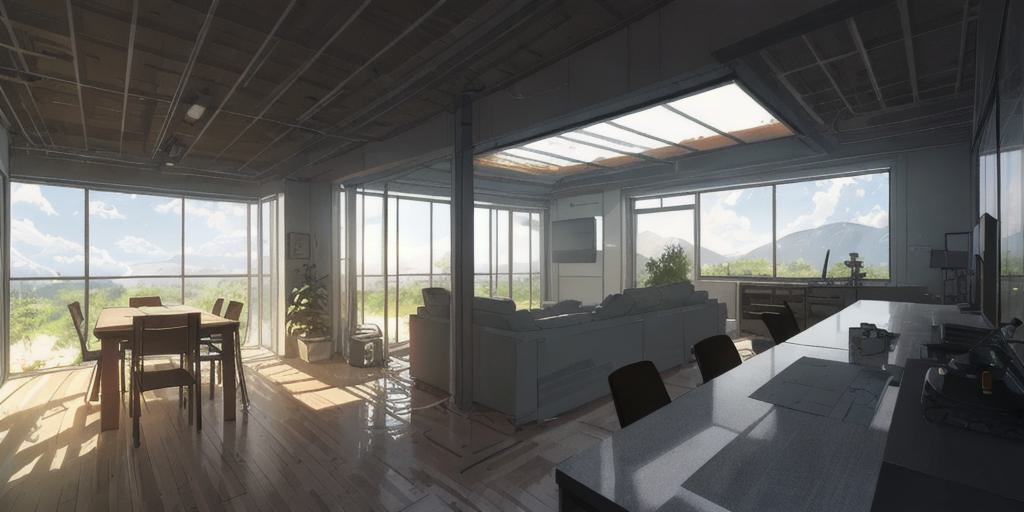
Embracing Sun Power: The Basics of Passive Solar Design
Picture this: you’re lounging in your off-grid haven, the sun’s rays streaming through strategically placed windows, warming your space to a comfortable temperature. This isn’t a fantasy, but a reality made possible by passive solar design. The concept? Harnessing the sun’s energy to warm your living spaces, reducing reliance on traditional heating systems, and thereby minimizing energy bills.
Passive solar design is about more than just facing your home towards the sun. It’s about using building materials that absorb and conserve heat, implementing effective ventilation, and designing a space that optimizes natural light. Arhaus Group director Dan Heyworth explains that this design principle can offer warm, dry, and comfortable homes without compromising aesthetics or causing a fuss.
Three Ways to Harness Solar Energy
There are three main methods to gain natural solar energy for space heating in houses: direct gain, indirect gain, and isolated gain. The most common of these is direct gain, which utilizes direct sunlight through windows. Dense flooring materials, such as concrete, absorb and retain this heat, releasing it as the house cools down.
Indirect gain uses a large, dense mass (like a concrete pillar or Trombe wall) placed in the path of direct sunlight. As the building cools, this mass radiates heat into the house, offering both functional and aesthetic benefits. Isolated gain, on the other hand, isolates heat in a specific room (like a conservatory) and uses ventilation to distribute this warmth throughout the home.
Why Ventilation and Insulation Matter
But harnessing solar energy is only half the battle. Effective ventilation is crucial for maintaining a comfortable and healthy indoor environment. Ventilation helps control humidity levels, reducing condensation and dampness. It can be achieved passively through clever window placement, creating a thermal chimney for warm air to escape, or with cross ventilation facilitated by strategic door and window positioning.
Insulation, too, is a cornerstone of passive solar design. Heat loss through uninsulated glazing can be ten times greater than through an insulated wall. Double-glazed windows can reduce this heat loss by nearly 50% in winter and cut heat gain by 10% in summer.
Remember, the journey to living off-grid and harnessing the power of the sun begins with thoughtful design and informed decisions. Passive solar design is not just an architectural trend; it’s a way to live in harmony with our environment, to respect and utilize the resources nature offers us. This, in essence, is the future of sustainable living.
The Benefits of Passive Solar Design in Residential Buildings
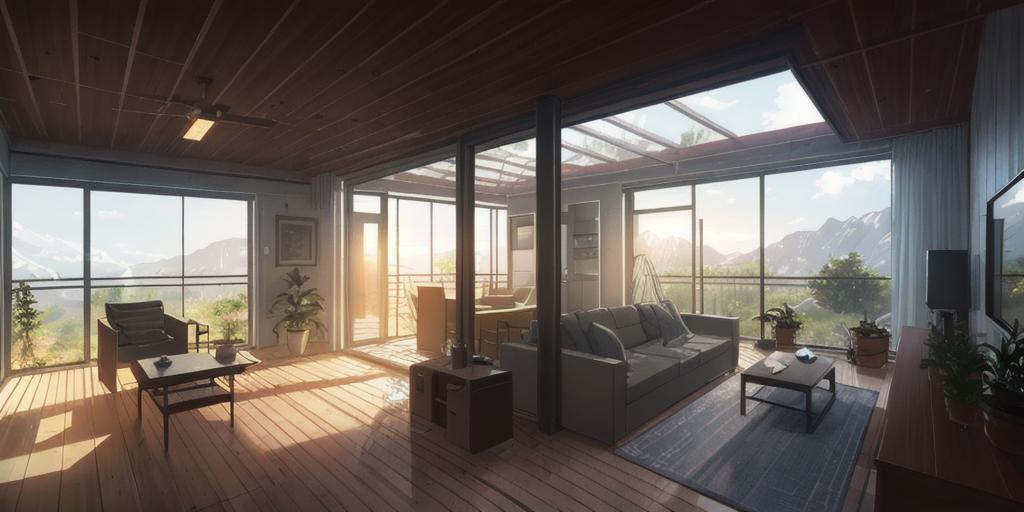
Living In Harmony: The Role of Landscaping in Passive Solar Design
Imagine a home that breathes with the rhythms of nature, a dwelling that uses the landscape as an integral part of its design. This is the essence of passive solar design, where the environment is a key player, not merely a backdrop. It’s about creating a symbiosis between your home and the life that surrounds it. Landscaping plays a pivotal role in this dance, offering shade, directing airflow, and helping to regulate temperature. It’s not just about the bricks and mortar; it’s about the trees, the shrubs, the grass – it’s about embracing the whole ecosystem.
Trees, for instance, take on a significant role in this design. Deciduous trees, those that lose their leaves in winter, are strategically placed to block the sun during the sweltering summer months, while allowing sunlight to penetrate and warm the building in the colder months. By contrast, evergreen trees serve as natural windbreaks, protecting your home from cold winter gusts.
Building a Sustainable Future: Real-Life Applications of Passive Solar Design
These design principles are not just theoretical but have been put into practice with stunning results. A look across the Atlantic reveals how the “passive house” concept from Germany has taken root in Brooklyn, New York. With a few dozen homes and small projects built or retrofitted to this standard, passive buildings are poised to make a significant impact on the city’s housing market. These buildings maintain a comfortable interior climate without active heating and cooling systems, resulting in energy-efficient homes that are as comfortable as they are sustainable.
Residents of these passive houses have reaped the benefits, including quiet interiors due to thick, insulated walls, fresher, cleaner air, and dramatically reduced energy bills. Living in these homes isn’t just a choice; it’s a lifestyle that embraces sustainability and the potential of nature.
The Science Behind the Style: The Efficiency of Passive Solar Heating
Passive solar heating isn’t just about aesthetics; it’s a highly efficient system. Direct-gain systems, for instance, can utilize up to 70% of the energy from solar radiation that strikes the collector. The Passive Solar Fraction (PSF) – the percentage of required heat load met by passive solar heating – can represent a significant reduction in heating costs.
Proponents of the system argue that cost hurdles and learning curves can be overcome, leading to a future where this method of building becomes the norm rather than the exception. In a world where buildings account for a significant percentage of carbon emissions, the implementation of passive solar design principles can play a crucial role in curbing climate change.
At the end of the day, embracing passive solar design is about more than just reducing your energy bill or making a design statement. It’s about stepping into a future where we live in harmony with our environment, harnessing the power of the sun, and creating homes that are sustainable, efficient, and in tune with the rhythms of the natural world.
Creating a Passive Solar Building That Meets Your Climate’s Needs
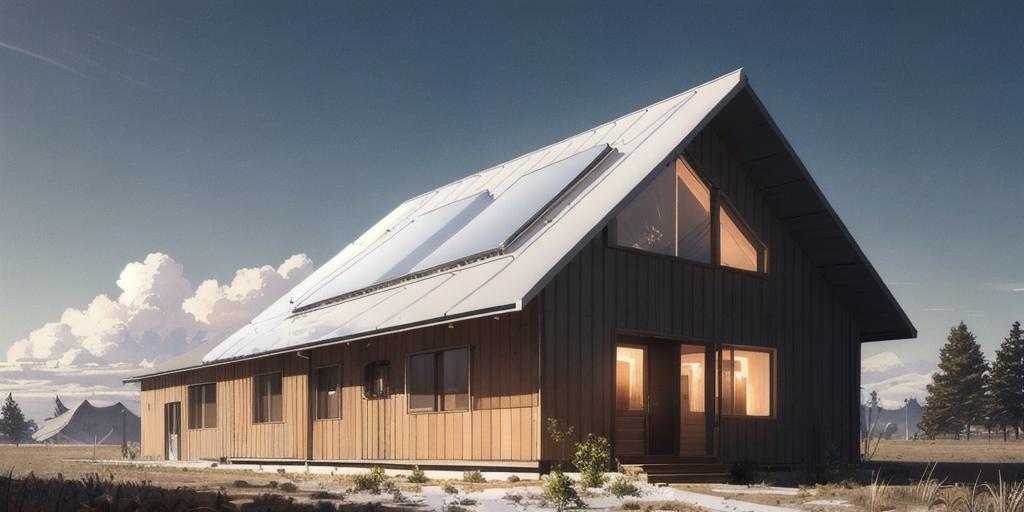
Understanding Your Climate: The First Step Towards a Passive Solar Building
Imagine if your home could adapt to your local climate, intelligently leveraging the elements to provide comfort, year-round. The first step to achieving this lies in understanding your local climate and its unique characteristics. Is it predominantly sunny or cloudy? Does it lean towards the warmer side or is it mostly chilly?
Once you’ve grasped the nuances of your climate, you can begin to design your home to make the most of what Mother Nature offers. In regions with ample sunshine, for instance, homes can be designed with large south-facing windows to allow sunlight to flood in, creating a natural source of heat. In contrast, homes in colder climates can incorporate features like thermal mass walls to store and release heat, reducing the need for artificial heating.
The Power of Positioning: Aligning Your Home with the Sun’s Path
Positioning your home correctly can significantly enhance its passive solar capabilities. Consider the sun’s path across your property. The ideal design ensures your home is oriented to absorb maximum sunlight during winter, while minimizing exposure during summer.
The sun’s angle changes with the seasons. In winter, it’s low in the sky, allowing it to shine directly into south-facing windows (for those in the Northern Hemisphere). In contrast, during summer, the high-angled sun will hit the roof or eaves, reducing the amount of direct sunlight entering the home.
Designing for Efficiency: Selecting the Right Materials
The materials you choose for your home can make a significant difference in its passive solar efficiency. Certain materials, known as “thermal mass” materials, can absorb, store, and slowly release heat over time.
Brick, concrete, and stone are excellent examples of thermal mass materials. When used in floors and walls, they can absorb heat during the day and release it at night, thereby maintaining a comfortable interior temperature. Conversely, materials like wood, carpet, and drywall have poor thermal mass and do not effectively store heat.
By intertwining an understanding of your climate, the sun’s path, and material choice, you can create a passive solar building that not only meets your climate’s needs but also provides a comfortable, cost-effective, and sustainable living environment. Remember, the goal is not just to build a home but to construct a living system, geared towards harmony with nature and self-sufficiency.
Passive Solar Design Techniques for Heating and Cooling Systems
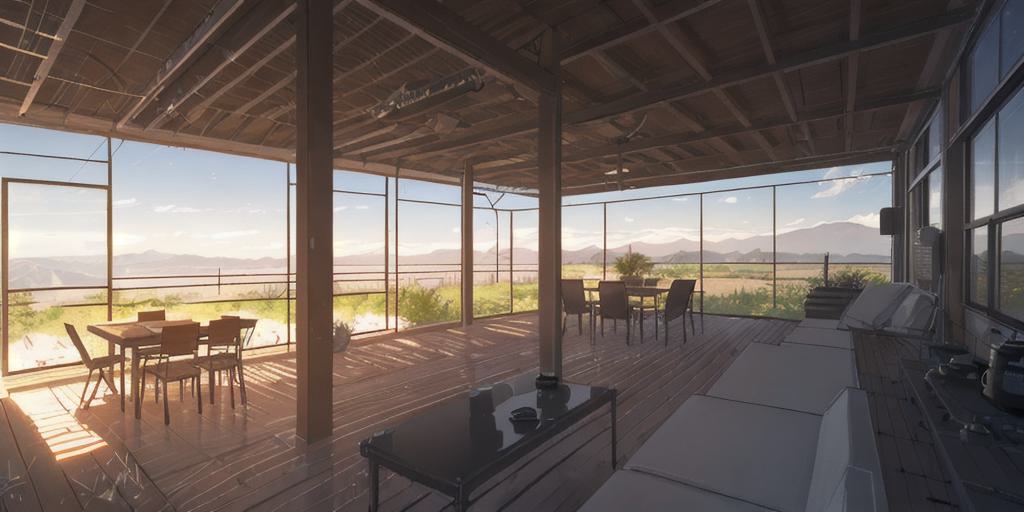
Heating and Cooling with the Sun – The Art of Passive Solar Design
Escaping the 9-5 grind and moving closer to nature doesn’t mean you need to sacrifice comfort. Have you ever considered that the sun, that celestial body that gives life to our world, could also be the key to your home’s heating and cooling needs? This is the essence of passive solar building design – a concept that’s as old as civilization itself but is now being rediscovered in our quest for sustainable living.
As this publication of passive solar projects points out, passive solar design is still in its rudimentary stages, often misunderstood and vaguely defined. Yet, for the building designer and the occupant, these concepts have major implications in the design and use of buildings. It’s a system that doesn’t just heat and cool buildings but also heightens our level of involvement in the design stages of our homes.
Architecting the Sun: Passive Solar Techniques
When we talk about passive solar design, we’re not just talking about adding solar panels to your roof. It’s about designing or retrofitting your home to take maximum advantage of the sun’s energy. This begins with the orientation of your home and its windows, the selection of materials with good thermal mass, and the inclusion of features like solar chimneys and earth-sheltered spaces.
Orientation is critical. For those in the Northern Hemisphere, a south-facing home with ample windows can take full advantage of the sun’s warmth in winter. In contrast, during summer, the high sun is blocked by overhangs and shades, reducing solar heat gain and keeping the home cool.
Materials Matter: The Role of Thermal Mass
Once you’ve got the orientation right, the next step is to consider the materials you use in your home. Materials with high thermal mass – like brick, stone, and concrete – are excellent at storing heat during the day and slowly releasing it at night. This passive heating and cooling strategy can significantly reduce your reliance on artificial heating and cooling sources, thereby cutting your energy costs.
However, remember that thermal mass is not the same as insulation. While thermal mass stores and releases heat, insulation prevents heat transfer. Therefore, a well-insulated home with good thermal mass is the key to an efficient passive solar design.
As you venture towards this self-sufficient lifestyle, remember that passive solar design is not just about the right materials or orientation. It’s about creating a home that lives and breathes with the sun, a home that’s not just a shelter but a living system in harmony with nature.
The Role of Orientation and Angle of Incidence in Passive Solar Design
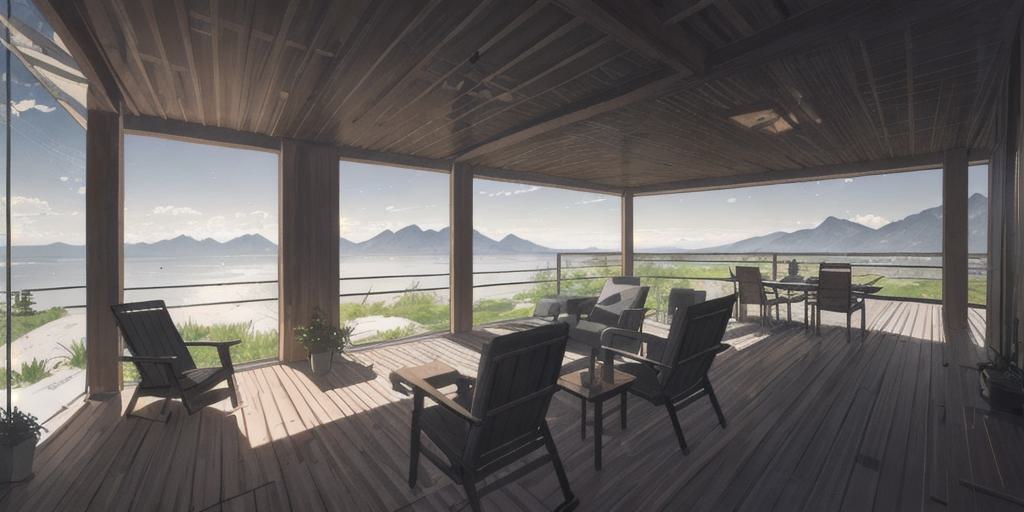
Orientation Unveiled: East, West or South?
Consider the sun as a compass guiding the orientation of your home. In our journey towards sustainable living, we must learn to harmonize with the natural rhythms of our environment, and that begins with understanding the sun’s path through our skies. A discussion on building design errors pointed out that large east and west-facing windows expose the home to low angle sun during mornings and evenings. This can lead to overheating during summer months, which could be detrimental to the comfort of your off-grid haven.
Yet, that’s not to say you should discard all east and west-facing glazing. As the same discussion highlights, even a modest amount of south-facing glass, around 5-7% of the floor area, can provide more energy during the vital period from November to March/April than zero south-facing glass. It’s a delicate balancing act between capturing the sun’s energy and avoiding overheating.
Angle of Incidence: The Sun’s Sweet Spot
Once you’ve nailed down the orientation, the next question is: at what angle should you position the solar features of your home? The angle of incidence, or the angle at which the sun’s rays meet your home, plays a crucial role in maximizing solar heat gain. The sun-path diagram is an invaluable tool for determining this angle.
For instance, at midday during winter solstice, the sun is at its lowest point in the sky. A vertical window would receive less direct sunlight compared to one that’s tilted at an angle equal to the latitude of the location. Thus, the angle of incidence can significantly impact the efficiency of passive solar heating.
Adapting to Your Environment: The Importance of Flexibility in Design
Passive solar design is not a one-size-fits-all solution. What works in an open, rural landscape might not be feasible in a densely populated urban setting. In these situations, the energy benefits of passive solar can be challenged. However, that doesn’t mean you should disregard passive solar design entirely. As pointed out in the AECB forum, super insulation and super windows allow more flexibility with orientation.
Embrace the fluidity of design. Adapt and innovate to suit your unique environment. The path to sustainable living is not a straight line, but a winding road that adapts to the ever-changing landscape of our world. As you journey towards a slower, healthier lifestyle, remember that every decision, no matter how small, can bring you one step closer to living in harmony with nature.
Passive Solar Design in Urban and Rural Areas: Different Challenges, Similar Principles
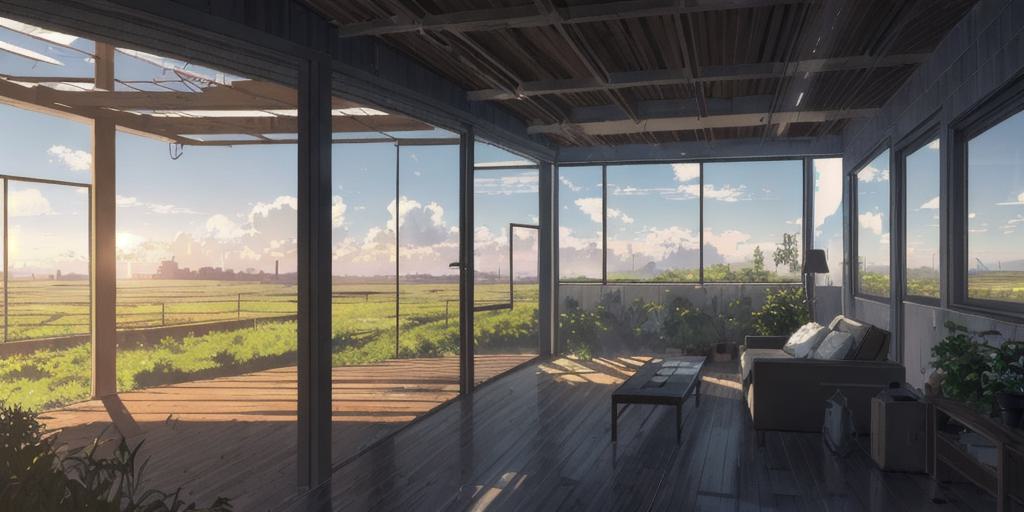
Urban vs Rural: Different Canvas, Same Artistry
In the city, the challenge lies in the density of buildings and their towering shadows. With the sun often playing hide and seek between skyscrapers, harnessing its energy becomes a game of strategy. On the flip side, in the open expanse of rural landscapes, the sun’s abundant availability might lead to overheating if not carefully managed. Each environment presents its own peculiar set of challenges, yet the underlying principles remain the same. The art is in adapting these principles to your unique canvas, be it urban or rural.
Think of your home as an ecosystem. Its design should reflect the interaction between its inhabitants and their environment. In the city, you might need to build upwards, using vertical spaces for solar panels or green walls. In the countryside, you might have the luxury of spreading out, using both your roof and yard for solar energy harvesting.
Harvesting the Sun: A Matter of Efficiency
The beauty of passive solar design lies in its simplicity. It’s not about buying the most expensive equipment or building the most avant-garde architecture. It’s about efficiency. It’s about extracting the maximum benefit from the sun’s rays with the least amount of effort and resources. This efficiency is realized through a well-considered design that takes into account the orientation, angle of incidence, and the unique challenges of the environment.
But remember, efficiency isn’t a fixed target. It’s a moving goalpost. As the sun changes its path across the sky throughout the year, your home needs to adapt to these changes. This adaptability is what makes passive solar design a dynamic, living process rather than a static, one-off solution.
Nature’s Footprint: Leaving a Lighter Mark
The journey towards sustainable living is a marathon, not a sprint. It’s a commitment to leave a lighter footprint on nature’s canvas. This commitment doesn’t end with the design and construction of your home. It extends to every aspect of your lifestyle, from the food you grow and eat to the energy you use and conserve.
So, as you escape the 9-5 grind and move closer to nature, remember to carry the principles of passive solar design with you. Let them guide your decisions, big and small, and help you shape a lifestyle that’s not only healthier and slower but also kinder to our planet. Embrace the journey, and you’ll find that the rewards of sustainable living far outweigh the challenges.
The Impact of Passive Solar Design on Indoor Air Quality and Comfort
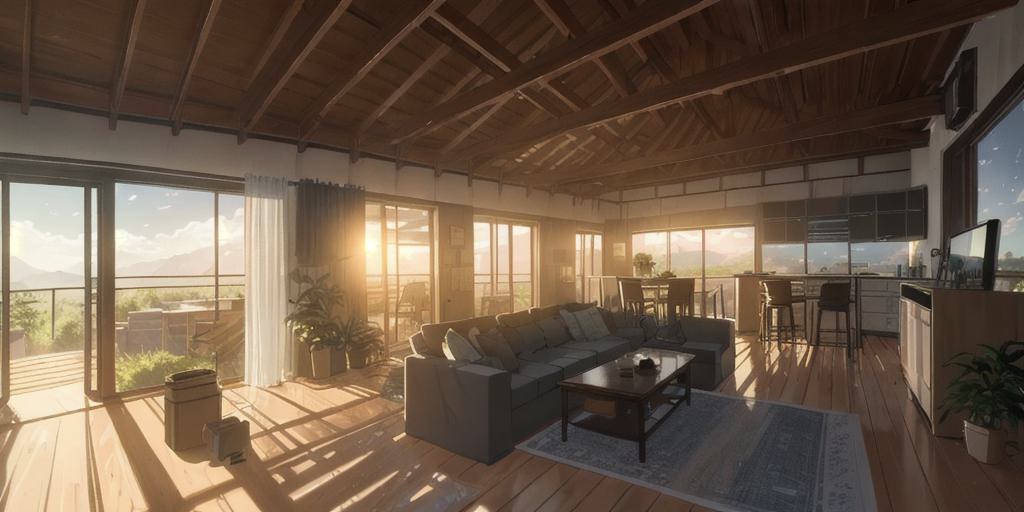
Reaping the Silent Benefits: Indoor Air Quality and Comfort
The dialogue on passive solar design often revolves around its energy-saving capabilities and carbon footprint reduction. But let’s shift our focus to something a bit more personal: the quality of the air you breathe and the comfort you feel in your own home. After all, the journey towards a sustainable lifestyle isn’t just about saving the planet; it’s also about enhancing your personal well-being.
Imagine your home as a sanctuary where the air is always fresh, the temperature is always comfortable, and your connection with nature is always present. This isn’t a pipe dream; it’s a tangible reality made possible by passive solar design. By harnessing the sun’s energy and manipulating it in clever ways, passive solar design can improve your indoor air quality and overall comfort.
But how exactly does this work? Let’s take a closer look.
Breathing Easy: The Role of Ventilation
Contrary to popular belief, sealing your home tight isn’t always the best strategy for energy efficiency. Yes, you want to prevent drafts and heat loss, but you also want to ensure a steady supply of fresh air. Stagnant air can lead to a build-up of moisture, allergens, and pollutants, creating an unhealthy living environment. According to Bill Burke & Elena Nansen, “Well-insulated, air-sealed buildings do require mechanical ventilation!”
Passive solar design addresses this issue through a carefully calculated ventilation strategy. By positioning windows and vents in strategic locations, your home can “breathe” naturally, drawing in fresh air and expelling stale air. This natural ventilation not only improves your indoor air quality but also adds a dynamic element to your living environment, connecting you with the rhythms of nature.
A Comfortable Haven: The Magic of Thermal Mass
If ventilation is the lungs of your home, then thermal mass is its heartbeat. Thermal mass refers to materials that can absorb and store heat, helping to regulate the temperature in your home. Think of it as a thermal battery; it charges up when the sun is shining, absorbing heat during the day, and discharges when the sun goes down, releasing warmth during the night.
The result is a more stable indoor temperature, reducing the need for heating and cooling systems. You’re not just cutting down on energy consumption; you’re also creating a more comfortable living environment. No more shivering in the morning or sweating in the afternoon. With the right use of thermal mass, your home can provide a steady, comfortable temperature all day long.
Passive solar design is more than just a strategy for sustainability; it’s a blueprint for a healthier, more comfortable lifestyle. By improving your indoor air quality and maintaining a stable temperature, it transforms your home into a haven of well-being. So as you venture into this new way of living, remember that the journey isn’t just about saving energy, but also about enriching your life.
Passive Solar Design and Sustainable Materials: A Holistic Approach to Building
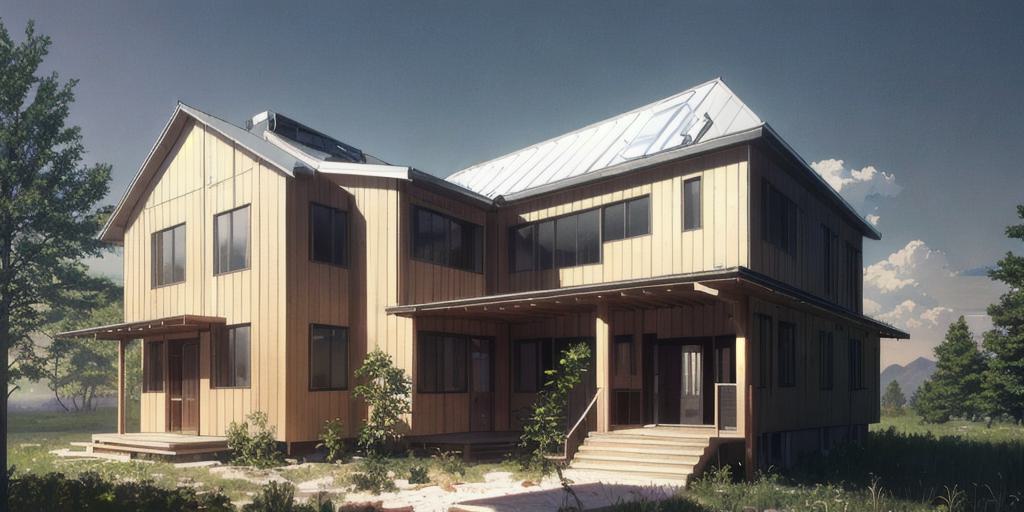
Embracing the Sun: Positioning and Orientation
Picture this: an architectural masterpiece that perfectly aligns with the celestial dance of sun and wind. This is not a scene from a sci-fi novel but a key principle of passive solar design. As Craft Homes explains, the positioning of your house in relation to the sun’s path and prevailing winds is imperative for effective passive solar design. The angle of your roof, the orientation of your windows, even the layout of your rooms – all these elements play a part in harnessing the sun’s energy and creating a home that breathes with the rhythms of nature.
But don’t be daunted by the technicalities. This is not about achieving mathematical precision, but about adopting a holistic approach, considering your site’s unique features, and aligning them with your personal needs and lifestyle. Remember, this is not a one-size-fits-all solution; it’s a journey of exploration, experimentation, and fine-tuning. And the reward? A home that is not just energy-efficient, but also deeply connected with the natural world.
Harvesting the Earth’s Energy: The Power of Earthtubes
Imagine a ventilation system that uses no electricity, requires minimal maintenance, and offers a steady supply of fresh air. Sounds too good to be true? Welcome to the world of earthtubes. These ingenious devices, as explained in The Natural Home, use the ground’s constant temperature to preheat or precool your home’s air intake, creating a natural, self-regulating ventilation system.
Earthtubes are a perfect example of how we can tap into the Earth’s energy without causing harm or depleting its resources. They embody the essence of passive solar design: using natural forces to our advantage, minimizing our impact on the environment, and creating a healthier living space. So next time you think about heating or cooling your home, consider looking down under. You might find a treasure trove of energy waiting to be harnessed.
Building with the Future in Mind: The Role of Sustainable Materials
When it comes to building a sustainable home, every choice matters – especially the materials you use. As suggested by Consistent Engineering Consultants, opting for eco-friendly, locally sourced, and recyclable materials can significantly reduce your home’s carbon footprint.
But the benefits go beyond environmental impact. Sustainable materials often have superior thermal properties, helping to regulate your home’s temperature and increase its energy efficiency. They can also enhance your home’s aesthetic, adding a touch of natural beauty and a sense of connection with the local landscape.
So as you embark on your journey towards a sustainable lifestyle, consider the materials you choose as building blocks not just for your home, but for your future. Make informed choices, be mindful of your impact, and remember: every decision you make is a step towards a healthier planet and a healthier you.
The Importance of Thermal Mass in Passive Solar Building Design
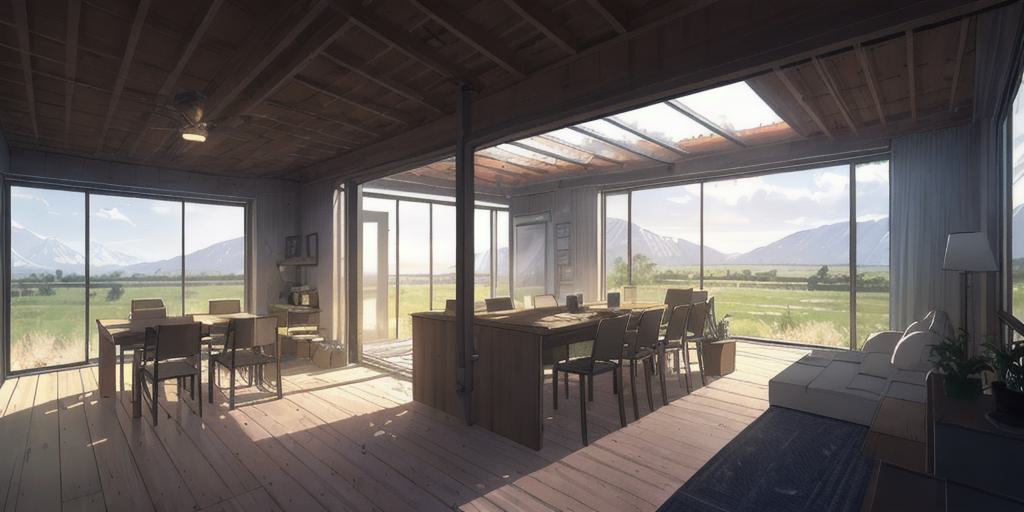
Understanding Thermal Mass: The Heat Sponge of Your Home
Imagine living in a house that acts like a heat sponge, soaking in the sun’s energy during the day and slowly releasing it at night. This is not a futuristic sci-fi concept, but a reality made possible by the clever use of thermal mass in passive solar building design. As elucidated by Passive Design Knowledge Centre, thermal mass, the ability of a material to absorb and store heat energy, is a key factor in creating an energy-efficient and comfortable living space using nature’s bounty.
Dense materials such as concrete, brick, and stone are champions of thermal mass. They absorb sunlight during the day, storing it as heat, and release it when the sun sets. This is not a one-off magic trick, but a daily cycle that keeps your home cozy in winters and cool in summers, all while reducing your reliance on conventional heating and cooling systems.
Thermal Mass in Action: A Symphony of Sun and Stone
But how does one leverage thermal mass in their home design? The key lies in the strategic placement of high-density materials. As the Riversong Housewright suggests, a concrete slab-on-grade floor can serve as a fantastic thermal mass element. Located directly in the sun’s path, it soaks up solar energy like a sponge during the day and releases it slowly at night. This thermal cycle creates a natural, self-regulating heating and cooling system that harmonizes with the rhythm of nature.
It’s important to note that thermal mass does not replace insulation but works in tandem with it. The insulation keeps the heat in, while the thermal mass stores it. It’s a partnership that sings a symphony of sun and stone, a symphony that can make your home an oasis of comfort and sustainability.
Unleashing the Full Potential of Thermal Mass
Harnessing thermal mass for your home is not just about using concrete floors or brick walls. It’s about creating a holistic design that works with your unique lifestyle and the specific features of your site. Mother Earth News suggests considering factors such as the orientation of your house, the size of your windows, and the layout of your rooms to maximize the effectiveness of thermal mass.
It’s not about making drastic changes or spending a fortune, it’s about making informed choices and taking small, practical steps towards a sustainable future. Remember, every decision you make, every material you choose, is a brick in the home of your dreams. So choose wisely, embrace thermal mass, and let your home dance with the rhythm of the sun.
Innovations in Passive Solar Design: Advanced Materials and Technologies
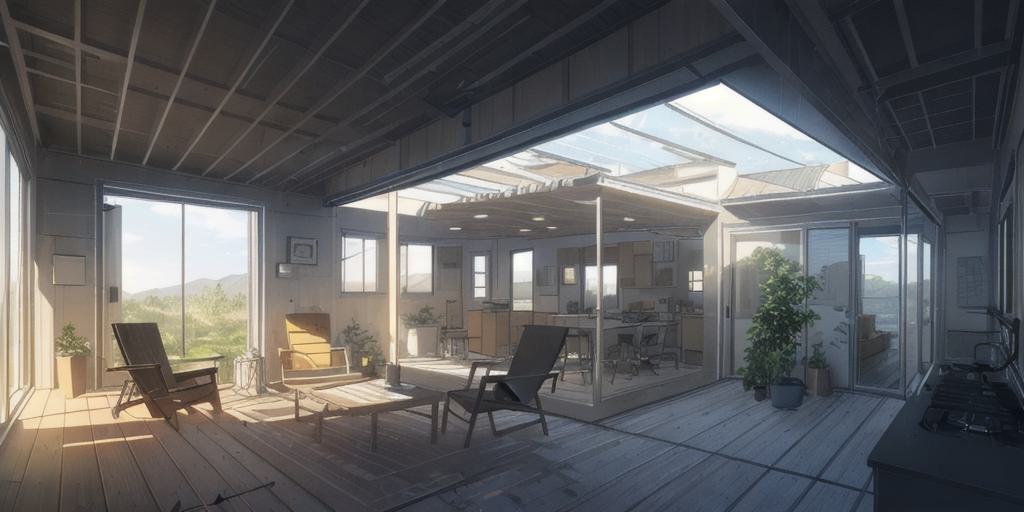
Polymers: The Unsung Heroes of Solar Design
As we continue our journey to a sustainable future, the importance of innovative materials cannot be overstated. Enter polymers, the unsung heroes of solar design. These versatile materials are the backbone of SolPol, a pioneering research initiative that aims to revolutionize solar thermal systems with polymer-based innovations. Energy Innovation Austria reports that the goal is to replace high-cost materials like copper and aluminum with polymers, ultimately lowering the cost of solar thermal systems.
Notice how SolPol isn’t just about creating new technologies; it’s about rethinking the existing ones. It’s about challenging the status quo, daring to dream bigger, and finding new ways to harness the sun’s energy. It’s an example of what happens when we combine scientific curiosity with a deep desire to make a difference in the world.
The Bullitt Center: A Living Testament to Passive Solar Design
If you’re looking for proof of the power of passive solar design, look no further than the Bullitt Center in Seattle. This six-story marvel, described by the Energy Portal as one of the greenest commercial buildings in the world, is a living testament to the potential of passive solar design. The building harnesses the sun’s energy through its large solar array and south-facing windows, while also efficiently regulating temperature with high-performance insulation and thermal mass materials.
The Bullitt Center is not just a building; it’s a symbol of a lifestyle. A lifestyle that values sustainability, efficiency, and harmony with nature. A lifestyle that, like the Bullitt Center itself, is rooted in the potent combination of ancient wisdom and modern innovation.
Metafilms: Steering the Future of Solar Sailing
Imagine a spacecraft propelled by the momentum of solar photons, an idea that seems straight out of a sci-fi novel. Yet, this is precisely what Next Big Future discusses with their exploration of advanced diffractive metafilm sailcraft. This innovative technology uses microscopically thin films to capture the freely available sunlight for space travel.
But what does this have to do with passive solar building design? It’s about embracing the untapped potential of the sun, about pushing the boundaries of what’s possible, and about innovating for a sustainable future. Just as the metafilm sailcraft is revolutionizing space travel, so too can we revolutionize the way we design our homes and structures here on Earth.
The journey towards a sustainable future is an exciting one, filled with challenges to overcome and discoveries to make. As we continue to explore innovations in passive solar design, remember that every step we take, every innovation we make, brings us closer to harmony with the natural world. So here’s to the dreamers, the innovators, and the pioneers – for they are the ones who will shape our sustainable future.
Embrace the Sun: Harnessing Natural Energy with Passive Solar Design
Passive solar design, a principle as old as civilization and as innovative as the future, offers a way to create comfortable, energy-efficient homes that respect our planet. It’s not about the latest solar panels or expensive technology. Instead, it’s about the intelligent use of natural resources, the strategic placement of building materials, and the insightful understanding of your local climate.
With the three main methods to gain natural solar energy for space heating in houses — direct gain, indirect gain, and isolated gain — you can create a home that not only looks and feels good but also reduces your carbon footprint. And let’s not forget the role of proper insulation and ventilation in maintaining a healthy indoor environment, or the significance of landscaping in regulating temperature and directing airflow.
Imagine a home that exists in harmony with nature, a dwelling that uses the landscape as an integral part of its design. With passive solar design, your home can breathe with the rhythms of nature, creating a symbiosis between you, your home, and the life that surrounds it. It’s about embracing the entire ecosystem.
However, the journey doesn’t end with the design and construction of your home. Passive solar design also impacts the quality of air you breathe and the comfort you feel in your home. By improving ventilation and harnessing the power of thermal mass, passive solar design can create a healthier, more comfortable living environment.
Moreover, the principles of passive solar design also extend to the materials you use. Sustainable, locally sourced, and recyclable materials can significantly reduce your home’s carbon footprint and improve its energy efficiency, all while enhancing its aesthetic appeal.
As we continue to explore new horizons in passive solar design, let’s remember that every decision we make, every innovation we make, brings us one step closer to a sustainable future. So let the sun guide you, let the wind inspire you, and let the earth nourish you as you embark on this journey towards harmony with nature. After all, the future of sustainable living begins at home.